- JST Home
- /
- Strategic Basic Research Programs
- /
 PRESTO
PRESTO- /
- project/
- Exploration of new science using mathematics to predict and control the future/
- [Mathematical Sciences for the Future] Year Started : 2024
[Mathematical Sciences for the Future] Year Started : 2024
Keita Iida
Mathematical Framework for Biological Dynamics Control
Grant No.:JPMJPR24K1
Researcher
Keita Iida

Associate Professor
Institute for Protein Research
The University of Osaka
Outline
This study aims to understand the operational principles of biological systems, which consist of hierarchically interconnected molecules, cells, and tissues. Constructing a mathematical framework that comprehensively captures disease transformation mechanisms from the perspective of gene regulation, I aim to enable disease prediction, optimal control, and applications in medicine. I also seek to develop versatile computational tools by integrating mathematical and data sciences, defining spaces that represent multimodal data.
Noriyasu Iwamoto
Deformation Modeling and Control of Closed Surface Structures with Piecewise Constant Mean Curvature
Grant No.:JPMJPR24K2
Researcher
Noriyasu Iwamoto
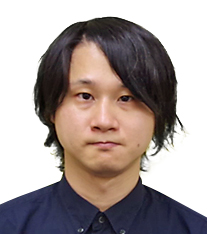
Assistant Professor
Faculty of Textile Science and Technology
Shinshu University
Outline
Real-time shape control of surface-like structures could enable innovations such as adaptive clothing, architecture, and furniture that respond to individual needs and environmental conditions. Achieving this requires shape models that are computationally efficient for use in both prediction and control. However, modeling the shape of closed surface structures poses significant challenges. This project investigates the mathematical representation of closed surface structures based on the assumption of piecewise constant mean curvature, with the goal of achieving shape control for these structures.
Yuzuru Kato
Quantum nonlinear dynamics theory for understanding, prediction, and control of quantum dynamics
Grant No.:JPMJPR24K3
Researcher
Yuzuru Kato
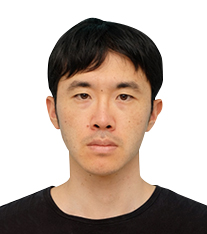
Associate professor
School of Systems Information Science
Future University Hakodate
Outline
This research aims to develop quantum nonlinear dynamics theory for understanding, analyzing, predicting, and controlling the complex phenomena of quantum systems. This research will open up new academic research areas of quantum nonlinear dynamics from the viewpoints of nonlinear dynamics analysis, nonlinear data analysis, and nonlinear control. This research will provide a fundamental theory for developing a new technology for quantum information science, quantum machine learning, and quantum measurement and control, thereby contributing to the development of quantum information processing and quantum device technologies.
Hiroshi Kera
Computational algebra and machine learning theory for large-scale algebraic computation
Grant No.:JPMJPR24K4
Researcher
Hiroshi Kera
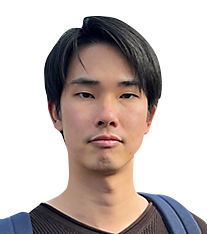
Associate Professor
Institute for Advanced Academic Research
Chiba University
Outline
This research aims to drastically accelerate high-cost algebraic and symbolic computation algorithms (particularly, Gröbner basis computation) using machine learning techniques, thereby establishing a practical computational method for large-scale algebraic equations. Specifically, we will focus on developing the foundational computational algebraic algorithms and machine learning models and theories. If this objective is achieved, it will enable the implementation of exact solutions through algebraic methods in large-scale control systems.
Tasuku Soma
Towards Submodular Optimization on Subspaces
Grant No.:JPMJPR24K5
Researcher
Tasuku Soma

Associate professor
The Institute of Statistical Mathematics
Research Organization of Information and Systems
Outline
Submodular optimization is an extremely powerful framework with efficient algorithms and a wide range of modeling capabilities to represent various problems involving discrete objects such as graphs and networks in a unified manner. In this project, we extend classical submodular optimization on subsets to submodular optimization on subspaces. We develop a new combinatorial optimization framework with a wide range of modeling capabilities and efficient algorithms based on matrix computation.
Han Bao
Interplay between loss function design and optimization dynamics
Grant No.:JPMJPR24K6
Researcher
Han Bao

Associate Professor
The institute of Statistical Mathematics
Research Organization of Information and Systems
Outline
This research project aims to extend calibration analysis, a framework to verify whether a surrogate loss leads to the optimal performance under a given evaluation metric, and integrate it with optimization dynamics. Therein, a general recipe to choose an appropriate loss function depending on optimization budget (on the whole computational time or error tolerance) is provided. This framework is going to be applied to classification with abstention, where a reasonable proper loss is chosen given optimization budget.
Shogo Nakakita
Change Point Detection in High-Dimensional Stochastic Differential Equation Models for Prediction and Control
Grant No.:JPMJPR24K7
Researcher
Shogo Nakakita
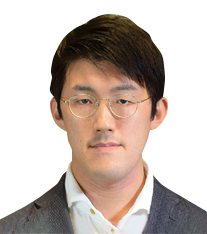
Project Lecturer
Graduate School of Arts and Sciences
The University of Tokyo
Outline
High-dimensional stochastic differential equation models are important in the prediction and control of complex phenomena with uncertainty; however, prediction and control by a single model can fail under regime shifts of systems. To address this problem, this project regards regime shifts as change points of models and develops methods to detect them properly.
Yuji Hirono
Development of topological control theory
Grant No.:JPMJPR24K8
Researcher
Yuji Hirono
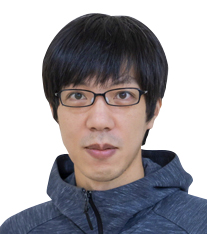
Associate Professor
Institute of Systems and Information Engineering
University of Tsukuba
Outline
This research aims to elucidate the relationship between robust control in complex systems and network topology, with the goal of establishing a new “topological control theory”. We will mathematically formalize a framework that characterizes robust control in various systems, such as chemical reaction networks and electrical circuits, using topological invariants. Additionally, we aim to develop efficient algorithms for detecting control mechanisms, with potential applications in fields like synthetic biology.
Yoshihiro Maruyama
Categorical Machine Learning and Applications to Chemical Information Processing
Grant No.:JPMJPR24K9
Researcher
Yoshihiro Maruyama
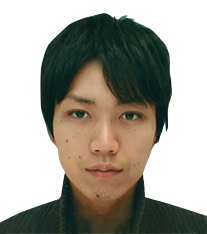
Associate Professor
School of Informatics
Nagoya University
Outline
Category theory is an abstract mathematical language allowing us to shed light on compositional structural aspects of various systems and processes in the sciences. In this project we apply category theory in artificial intelligence and machine learning, thus developing the novel paradigm of categorical machine learning for the next generation of artificial intelligence that integrates symbolic reasoning and statistical inference capabilities. In this project we focus inter alia upon the theoretical foundations of categorical machine learning and explore potential applications to chemical information processing in particular.
Yuta Mizuno
Quantum Computing for Operator-Theoretic Analysis of Dynamical Systems
Grant No.:JPMJPR24KA
Researcher
Yuta Mizuno
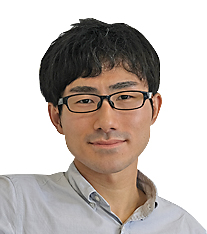
Senior Researcher
Global Research and Development Center for Business by Quantum-AI technology
National Institute of Advanced Industrial Science and Technology
Outline
Simulating every conceivable scenario and guiding optimal decision-making—to achieve such ideal prediction and control, this project aims to develop quantum software. Specifically, grounded in the operator-theoretic approach to dynamical systems theory, I will develop a suite of quantum programs for dynamical systems analysis. These programs will simulate a wide variety of possible scenarios in parallel using a quantum differential equation solver, extract essential dynamical information through quantum dynamic mode decomposition, and construct reduced-order models useful for understanding and controlling dynamic phenomena.
Hiroki Miyazako
Functional control of bioartificial muscle tissue based on topology of cell alignment
Grant No.:JPMJPR24KB
Researcher
Hiroki Miyazako
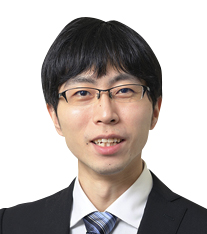
Lecturer
Graducate School of Information Science and Technology
The University of Tokyo
Outline
Muscle tissue engineering has been widely developed as biotechnology for many social problems, including regenerative medicine and drug discovery. However, design principles for engineered muscle heavily depend on rules of thumb or trial and error. Based on theories of cell alignment based on complex analysis, this study aims to develop new mathematical theories for predictive design and control of muscular functions from viewpoints of (1) mechanical contraction, (2) self-repairing, and (3) propagation of excitation.
Hiroshi Morioka
Data-driven prediction and decoding of complex systems via representation learning
Grant No.:JPMJPR24KC
Researcher
Hiroshi Morioka
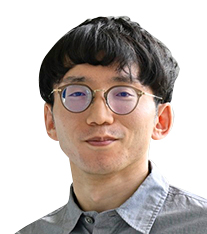
Associate Professor
School of Data Science
Shiga University
Outline
This project aims to realize prediction and control of high-dimensional complex systems by developing novel data-driven frameworks combining representation learning, seeking fundamental latent representation of those systems, and control law designing based on such latent representation.
Toshiaki Yachimura
Developing a Mathematical Framework for Inferring and Controlling Cell Differentiation Dynamics via Optimal Transport Theory
Grant No.:JPMJPR24KD
Researcher
Toshiaki Yachimura

Senior Assistant Professor
Mathematical Science Center for Co-creative Society
Tohoku University
Outline
This research aims to develop a method based on optimal transport theory to estimate cell differentiation dynamics using time-series scRNA-seq data. We will construct a mathematical framework to infer and control Waddington’s epigenetic landscape and the underlying gene regulatory networks in gene expression space. Furthermore, we aim to reconstruct spatiotemporal gene expression patterns in actual three-dimensional tissues from time-series scRNA-seq data.
Hidekazu Yoshioka
Establishment of non-Markovian biological resource management models
Grant No.:JPMJPR24KE
Researcher
Hidekazu Yoshioka

Associate Professor
Graduate School of Advanced Science and Technology
Japan Advanced Institute of Science and Technology
Outline
We will describe environmental and resource dynamics in a unified manner as a polynomial process based on the Markovian lifts. We will also analyze the presence or absence of turning points and their precursors. Furthermore, by tracking the changes in the Orlicz space that correspond to data fluctuations and memories, we will work on prediction and control to avoid and mitigate turning points and even try to revitalize systems that have reached a turning point. In addition to developing mathematical methods, we will apply the proposed methods by installing an environmental measurement system in cities at risk of vanishing.













